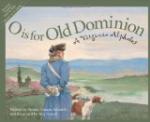The stories of Evelyn Byrd’s London experiences bring many noted names into the train of those who did her honour: the Lords Chesterfield and Oxford, and Pope at the height of his glory, and the cynical Lord Hervey, and Beau Nash, the autocrat of Bath. There should be mentioned too that old courtier (whoever he was) whose admiration was expressed in the rather mild witticism, “I no longer wonder that young men are anxious to go to Virginia to study ornithology, since such beautiful birds are to be found there.”
It was in the midst of this London gayety that Evelyn Byrd so literally met her fate in meeting the grandson of Lord Peterborough, Charles Mordaunt. The story of that unhappy love affair—the devoted pair, the opposition of the maiden’s father, and the separation of the lovers—has become an oft-told but ever attractive romance.
About 1726, Colonel Byrd returned with his family to Virginia; and it was then, it seems, that he built the present mansion at Westover, and entered upon the almost sumptuous life there that was to make the plantation famous.
And Westover was a worthy setting for the worthy Colonel. Without the home, were lawns and gardens beautiful with native and imported trees, shrubs, and vines; and within the home, spacious rooms with rich furnishings and art treasures gathered in England and on the Continent. Here too was one of the largest and most valuable collections of books in the colonies. As a matter of course, this home was a distinguished social centre, drawing to itself the most brilliant colonial society.
Colonel Byrd died in 1744, and was buried in the old garden when it was in all its summer glory. In the next generation, Westover passed to strangers, having been for a century and a quarter the home of the Byrds, who for three successive generations had held proud position in colonial America.
Since then, the plantation has suffered from many changes of ownership, and from the Civil War. The mansion was held several times by the Federal forces, being used as headquarters and as an army storehouse. Among the war injuries it sustained was the destruction of one wing. The destroyed portion has been rebuilt recently by the present owner of the estate, Mrs. C. Sears Ramsay. Under her ownership, Westover has had added interest, especially for lovers of the colonial, on account of such extensive restoration as has made the old home one of the finest examples of eighteenth century architecture and furnishing in America.
Surely while we have been telling the story of Westover, Gadabout has had time to reach the steamboat pier above the house; and we may take it that she is safely tied to the pilings.




